#Polyurethane Rigid Foam
Explore tagged Tumblr posts
Text
North America Region to Remain Most Profitable Market for Green and Bio Polyols Through 2027, States MarketsandMarkets™
Is Green & Bio Polyols A Strong Competitor Of Synthetic Polyols? Green and bio polyols are either synthesized from natural oils, such as soya, castor, palm, canola, and sunflower, or natural sources, such as corn and sugar, or carbon dioxide (CO2). They are also recycled from polymers such as polyurethanes (PU) and polyethylene terephthalate (PET). These polyols are used to make PU rigid and…

View On WordPress
#bio based polyols#Bio Polyols#bio polyols market#COVID 19 impact on Green Polyols Market#Demand of Green and Bio Polyols#global green and bio polyols market Forecast#Green and Bio Polyols Market#Green and Bio Polyols Market Forecast#Green and Bio Polyols Market Growth#Green and Bio Polyols Market Share#Green and Bio Polyols Market Size#Green Polyols#Green Polyols Industry#Green Polyols Market#Market#Polyurethane Flexible Foam#Polyurethane Rigid Foam#Sales of Green and Bio Polyols Market#size of green and bio polyols
0 notes
Text
Rigid Polyurethane Foam Manufacturer and exporter-Alaska Puf
Alaska PUF stands as a trusted name in the industry, recognized as a premier Rigid Polyurethane Foam Manufacturer and exporter. With state-of-the-art facilities and a commitment to innovation, we produce a comprehensive range of rigid polyurethane foam (PUF) and polyisocyanurate (PIR) materials tailored for high-performance thermal insulation applications.
Our Rigid Polyurethane Foam products are crafted to deliver exceptional thermal efficiency, durability, and versatility, making them ideal for industries like construction, refrigeration, cold storage, and HVAC systems. With a strong presence in domestic and international markets, Alaska PUF is a leading provider of Rigid Polyurethane Foam in India, ensuring superior quality and performance in every application.
At Alaska PUF, we leverage advanced manufacturing technologies to produce rigid polyurethane foam solutions that meet global standards. Our product range includes insulation panels, pipe sections, blocks, and customised solutions, designed to address specific industry requirements. As a reputable Rigid Polyurethane Foam Manufacturer, we prioritise quality and sustainability, offering products that enhance energy efficiency and reduce environmental impact.
Why Choose Alaska PUF?
Advanced Manufacturing: Hi-tech facilities producing premium-quality Rigid Polyurethane Foam.
Expertise: Years of experience as a leading Rigid Polyurethane Foam Manufacturer in India.
Global Reach: Renowned exporter of rigid polyurethane foam products to international markets.
Diverse Product Range: Comprehensive solutions for thermal insulation across industries.
Customization: Tailored products to meet unique client needs.
Whether you need reliable insulation materials for industrial, commercial, or residential applications, Alaska PUF is your trusted partner. Experience excellence in Rigid Polyurethane Foam solutions with Alaska PUF – where quality meets innovation. Contact us today to explore our extensive range of products!
For More Information:
8141433999,8200100912
102 Avantika Flats, 35 Chaitanya Society, Sardar Patel Stadium Rd,, Navrangpura, Ahmedabad, Gujarat 380009
0 notes
Text
Explore the Indian market for polyurethane foam liquid suppliers and uncover excellence with Shakun Industries. As a renowned industry leader, Shakun Industries offers top-quality polyurethane foam liquids tailored to your unique needs. Discover why they stand out as one of the best suppliers in India for this versatile material.
#chemical#polyurethane#polyolmanufacturers#polyurethanefoam#shakun industries#bestpolyol#rigid polyurethane foam chemicals#polyurethane foam market
0 notes
Text
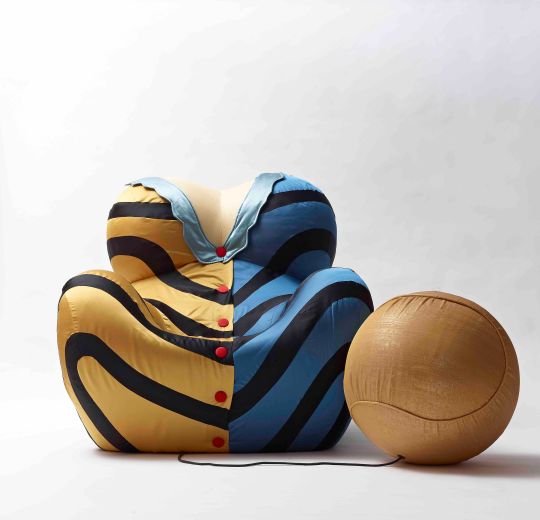
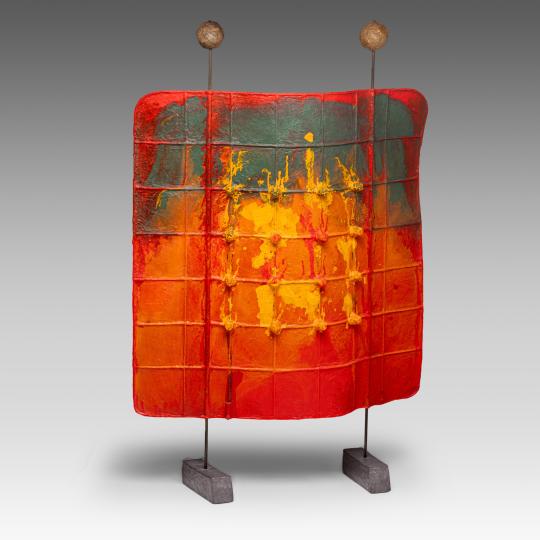
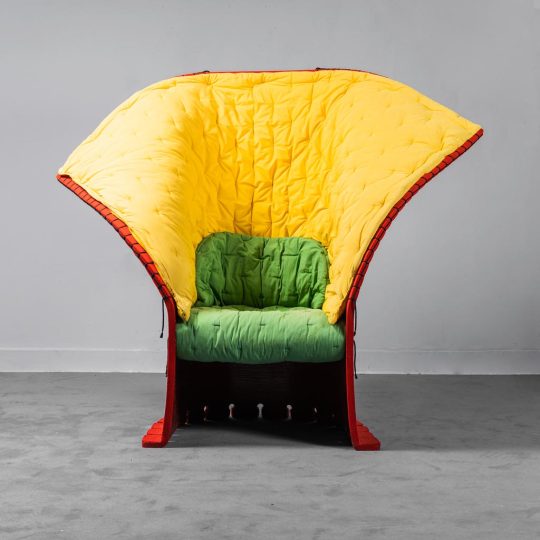


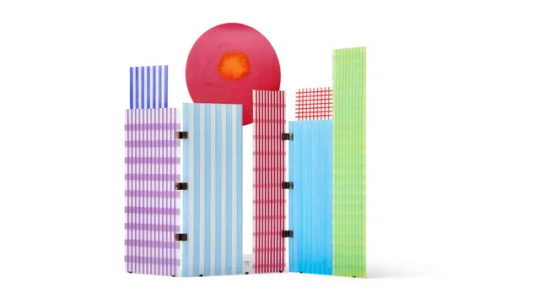
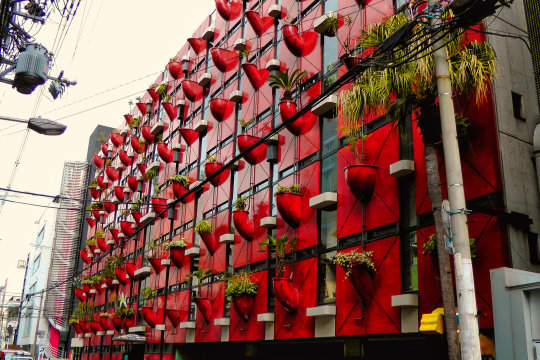
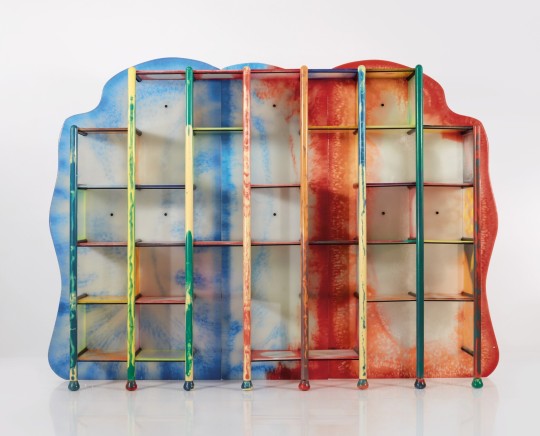
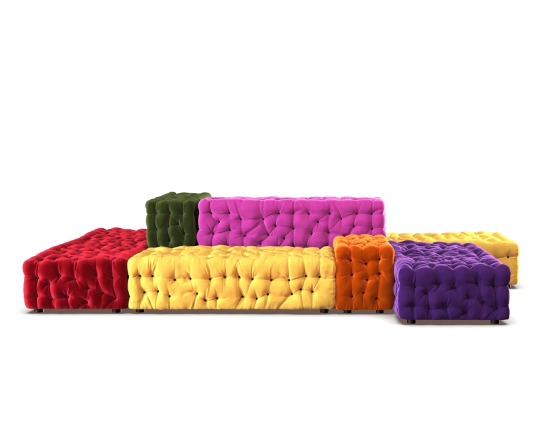
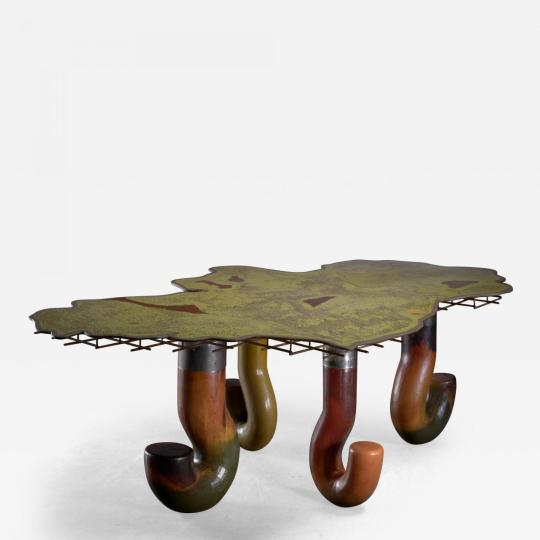
Gaetano Pesce (8 November 1939 – 3 April 2024)
Moving against the stream of rational, functional modernism in the 1960s and early 70s, Mr. Pesce experimented with materials and production methods to create furniture pieces imbued with political or religious meaning for brands from Cassina to B&B Italia.
Many would go on to become icons of Italian design including the Up5 chair – an innovative vacuum-packed chair designed to resemble a female prisoner – which he designed for B&B Italia precursor C&B.
Pesce moved to New York in 1983 and began to move away from mass production to create "standardised series" in everyday materials like resin, adapting conventional production techniques to create varied and imperfect outcomes.
The result are pieces such as the 1884 Pratt chair, which toe the line between functional design and decorative art, helping to create a new category that would later become collectible design.
Mr. Pesce was born in the Italian city of La Spezia in November 1939, only two months after the start of world war two.
As was common at the time, he trained in both architecture and design, studying first at the University of Venice and later at the Venice Institute of Industrial Design.
Among his architecture projects is the Organic Building in Osaka from 1993, with its plant-covered facade made of orange fiberglass that served as a precursor to today's vegetation-covered green walls.
But Mr. Pesce's most pioneering and well-known work happened in the world of design. In the late 1960s, he became one of the leaders of Italy's Radical Design movement, rejecting modernism's rigid focus on forms dictated by function.
Instead, Pesce focused on the idea that functional objects, much like art, could carry a deeper message.
One of the most famous examples is the controversial Up5 chair from 1969, which manufacturer B&B Italia describes as "the first product of Italian design with a political meaning".
Rest In Power !
"Up 5 & 6" Dressed Up Chair & Ottoman, 1969 – 2014, Polyurethane foam, fabric, Height: 40.5 in (102.87 cm)Width: 47 in (119.38 cm)Depth: 51 in (129.54 cm)Seat Height: 16 in (40.64 cm),
“Square Airport Lamp” (1986/1994). Photography by Elizabeth Carababas/The Future Perfect. Light sculpture consisting of a flexible rubber membrane studded with small light bulbs. Although made from a mold, no two lamps are alike, due to the imperfections that arise from the hand-mixing and pouring of colored urethane. H 92 - W 65 Cm,
"Feltri" Armchair for Cassina, 1980 -1989, Felt, Fabric, Resin, Width: 156 cm, Depth: 80 cm, Height: 129 cm, Seat height:42 cm, Courtesy: Oldera,
"Pratt Chair #7," 1984 2018 (purple), 2018, Transparent polyurethane, :93 x 53 x 53 cm. (36.6 x 20.9 x 20.9 in.),
"The Cabinet of The Tired Man," 2018, Photo: Courtesy of Salon 94 Design and Gaetano Pesce,
"Tramonto a New York" three-door screen, for Cassina, Made of coloured resin, hinges and feet in burnished brass, Width: 221, Height: 199,
"Organic" Building, Osaka, Japan, Completed in 1993 to embody the corporate ideal of Oguraya Yamamoto Co., Ltd,
"La In-Portante" Modular Bookshelf from the "Abbraccio" Series, 2010. Comprising 57 adjustable polyurethane resin shelves. Produced by Le Fablier, Italy. Polyurethane resin, painted wood, lacquered metal, 86½ x 118¾ x 16⅞ in. (219.7 x 301.6 x 42.6 cm) Courtesy of Sotheby's,
La Michetta Modular Sofa,Compostion of 8 by Meritalia, Structure in Lacquered Wood Seat with Elastic Belts, Flexible Polyurethane & Fiberfill Padding, Dimensions: W370 x D245cm,
Unique 'Ireland' table, Made of polyurethane and metal. The table was made and exhibited in 1996 by Gallery Mourmans, Knokke-Zoute, Belgium. It was part of a series of 'EU tables', where all 15 member countries were represented as a table, in this case Ireland. The top of the table has the shape of the outlines of the country and it stands on legs in the shape of question marks. W.80.71 in;H.28.74 in;D.57.09 in; (W.205 cm;H.73 cm;D.145 cm), Courtesy: Incollect.
#art#design#sculpture#furniture#seat#chair#forms#cassina#B&B#polyurethane#incollect#ireland#modular#bookshelf#table#fiberglass#sofa#gaetano pesce#rip#rip gaetano pesce#screen#iconic#up5#UP6#political#pratt chair#feltri#tramonto#new york
56 notes
·
View notes
Text
The Power Of Polymer: Unfolding The Magic Of Polyurethane Foam Production

INTRODUCTION:
In the dynamic and evolving world of polymer science, one name specifically stands out due to its versatility and vast applicability – Polyurethane. A byproduct of the mind-boggling chemical reaction between two liquid materials, polyurethane is a unique type of polymer that effectively transforms into a foam. This article endeavors to offer you a detailed look into the exciting world of polyurethane foam production
THE DYNAMIC DUO:
Polyurethane foam is produced when two chemically distinct liquid materials – commonly referred to as the “”A”” component and “”B”” component – are combined under specifically controlled conditions.
The “”A”” component, or Polymeric MDI (methylene diphenyl diisocyanate), is a reactive isocyanate that boasts a relatively low viscosity level, enabling it to mix flawlessly with the “”B”” component. It has a brownish coloration and often exudes a slightly sweet smell.
Meanwhile, the “”B”” component, also known as Polyol, is a polyether compound that is generally less reactive than its “”A”” counterpart. It is characterized by a pale, almost transparent color and presents a tasteless, odorless profile.
POLYURETHANE PRODUCTION:
Let’s delve into the fascinating process through which these two distinct liquids join forces to produce the mighty polyurethane foam.
When combined, the polyether polyol and the polymeric MDI kickstart an exothermic chemical reaction that generates a considerable amount of heat. During this process, tiny gas bubbles are formed, which get trapped within the polymer structure, eventually giving rise to what we commonly recognize as foam. This intriguing process is commonly referred to as “”foaming.””
The reaction’s speed and the cell structure’s quality are heavily dependent on the specific quantities and properties of the A and B components. Manipulating these parameters allows for the production of a wide variety of foam types from rigid and semi-rigid to flexible. Additionally, various catalysts and surfactants can be added to control the cell structure’s size and distribution, as well as the reaction speed.
The transformation process from a liquid state to a solid, foamed state is surprisingly quick – often taking less than a few minutes. However, it’s noteworthy to mention that the foam continues to cure and reach its complete strength over the course of a few hours or even days.
APPLICATIONS OF POLYURETHANE FOAM:
The versatility of polyurethane foam is extraordinary. From furniture and bedding to automotive applications, thermal insulation in construction, and even in the footwear industry, polyurethane foam has spread its roots far and wide.
UNDERSTANDING THE SCIENCE:
The combination of a polyether polyol and a polymeric MDI generates not just heat but also a new product – urethane. Urethane forms strong, resilient bonds that contribute to the flexible, durable nature of the resultant foam. This is what makes polyurethane an excellent choice for various applications that require durability, flexibility, and excellent thermal and acoustic insulation properties.
In conclusion, the creation of polyurethane foam from two liquid materials is a mesmerizing example of polymer formation, which encapsulates the dexterity and capability of synthetic chemistry. By manipulating the compounds’ properties and the conditions under which the reaction occurs, scientists and engineers have managed to expand the realms of possibility, thereby furthering the boundaries of modern industrial applications. Thus, polyurethane foam not only offers an excellent material for various purposes but also profoundly echoes the power and potential of polymer science.
Tagged Foundation Solutions, Polymer, Power Of Polymer
#Foundation Solutions#Power Of Polymer#Foundation Repair#Foundation#Polymer#foundation contractor#foundation experts#foundation services#foundation repair near me
6 notes
·
View notes
Text
Insulation 101: Benefits and Types of Insulation

Commercial building owners invest in quality insulation materials because of their numerous benefits. Insulation helps enhance the overall performance of any commercial building, decreases harmful greenhouse gas emissions, and helps keep your energy bills from increasing.
In addition, adding insulation to your establishment can also reduce the number of noises coming in and out. This is beneficial mainly for establishments that require better acoustics or sound barriers. Let's learn more about the different types of insulation material available now.
Batt Insulation
Professionals use batt insulation efficiently, one of the most affordable options available today. It comes with two options; with or without facing. Professionals must place this per specifications to resist water vapor transfer. Most insulation today contains recycled materials such as sand. Fiberglass also includes sand which is an environmentally friendly content source.
Batt insulation can either be fiberglass, cotton, or stone wool blankets. Fiberglass is the most common type out of the rest. It is the perfect insulation for attics, walls, ceilings, crawl spaces, and basements.
Blown-in Insulation
When it comes to blown-in insulation, proper installation is a must. Professionals should utilize special equipment and safety measures to ensure long-term function. In addition to being primarily recycled, cellulose blown-in insulation also contains fire-retardant properties. It also resists insects, rodents, and mold and impressively creates a good sound barrier. Once the professionals finish the application, there are also available products with insulation that you can incorporate to enhance your commercial building, such as an insulated roof hatch.
Spray Foam Insulation
If you prefer an insulation material that forms an air barrier, then spray foam insulation should be the option on your list. This material can effectively cover your walls, floors, and ceiling cavities against air movement. This includes spaces around electrical outlets, light fixtures, and walls that meet windows and doors.
Professionals use spray foams in open cavities, like in new construction, crawl spaces, rim joists, and attics. You can also use this on remodeled homes. You can apply the spray foam if the cavities are unrestricted and accessible. Here are the two varieties of spray-foam insulation;
Closed-cell SPF- is a type of spray foam insulation that adds structural strength and is a rigid, vapor-resistant foam that doesn't require replacement in case of a flood.
Open-cell SPF- spray foam insulation that offers identical insulation advantages but does not act as a water barrier or vapor retarder.
Air Sealing
Controlling the air leakage of an establishment is critical to effective insulation. You can do a great job protecting an establishment, but if air can seep through gaps or cracks in the building envelope, you lose your valuable heated or conditioned air.
Concrete Block Insulation
A concrete block's center contains insulating materials such as polystyrene, polyisocyanurate or polyiso, and polyurethane. The hollow centers of concrete blocks can be filled by pouring and injecting loose foam beads or liquid foam. Some professionals create concrete blocks that support rigid foam inserts.
Reflective System
Unlike most typical insulation, which resists convective and conductive heat flow, reflective insulation works by reflecting radiant heat away from your commercial building. These insulation types are best for hot and humid climates, primarily if you have cooling air ducts in the attic. According to research, radiant barriers can lower cooling costs by up to 5% to 10% when utilized in a warm, sunny temperature.
There are still other insulation options available. Ensure to collaborate well with your architect, engineer, or contractor to choose the best insulation option based on your commercial building's needs and your project budget.
Did you find our blogs interesting? You can find more exciting blogs at Best Access Doors! We also offer various top-quality access doors and panels for any commercial building application. You can dial (800) 483-0823 to learn more about our products.
2 notes
·
View notes
Text
Top 15 Market Players in Global Phosphorus-Containing Polyols Market
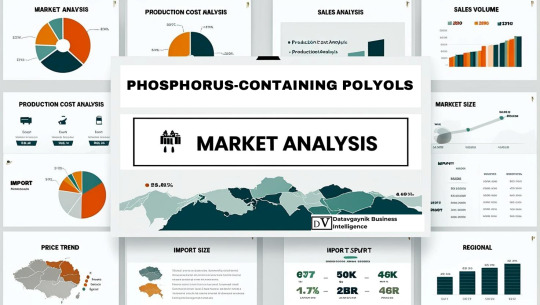
Top 15 Market Players in Global Phosphorus-Containing Polyols Market
Phosphorus-containing polyols are widely used in the production of flame-retardant polyurethane foams, coatings, and adhesives. The market for these specialty chemicals is growing due to increasing safety regulations and demand for advanced materials. Below are the top players leading the global market:
BASF SE A market leader in specialty chemicals, BASF offers high-performance phosphorus-containing polyols designed for use in rigid and flexible polyurethane foams.
Dow Inc. Dow produces phosphorus-based polyols with superior flame-retardant properties for applications in construction, automotive, and furniture industries.
Huntsman Corporation Huntsman develops innovative phosphorus-containing polyols used in fire-resistant coatings, adhesives, and foams, focusing on sustainability.
Lanxess AG Specializing in flame-retardant chemicals, Lanxess provides a wide range of phosphorus-based polyols for industrial and commercial applications.
Evonik Industries AG Evonik is a leader in specialty chemicals and supplies phosphorus-containing polyols for high-performance polyurethane systems.
Stepan Company Stepan manufactures a variety of polyols, including phosphorus-based formulations, targeting applications in fire-retardant polyurethane foams.
Covestro AG Covestro offers phosphorus-based polyols that combine fire resistance with excellent mechanical properties for industrial and commercial use.
KKPC (Kumho Petrochemical) A South Korean company specializing in advanced materials, KKPC produces phosphorus-containing polyols for automotive and construction applications.
Momentive Performance Materials Momentive develops high-performance phosphorus-containing polyols used in advanced coatings and adhesives with enhanced flame resistance.
ICL Group Ltd. A global leader in specialty minerals and chemicals, ICL supplies phosphorus-containing polyols for fire retardant systems in construction and electronics.
Shell Chemicals Shell manufactures phosphorus-based polyols for use in high-performance polyurethane foams, catering to the automotive and construction sectors.
Perstorp Group Perstorp produces specialty polyols, including phosphorus-containing variants, for applications requiring superior fire resistance and durability.
SABIC (Saudi Basic Industries Corporation) SABIC provides phosphorus-based polyols for advanced materials, focusing on flame retardancy in high-performance foams and coatings.
Repsol S.A. Repsol manufactures high-quality phosphorus-containing polyols for use in construction and industrial applications with stringent fire safety standards.
Shanghai Lianheng Isocyanate Co., Ltd. This Chinese company specializes in the production of phosphorus-based polyols for local and international markets, focusing on cost-effective solutions.
Request report sample at https://datavagyanik.com/reports/global-phosphorus-containing-polyols-market/
Top Winning Strategies in Phosphorus-Containing Polyols Market
The phosphorus-containing polyols market is highly competitive, with companies employing various strategies to capture market share and drive innovation. Here are the key strategies shaping the industry:
1. Sustainability Initiatives
Developing eco-friendly phosphorus-based polyols to meet stringent environmental regulations and reduce the carbon footprint.
Promoting the use of renewable raw materials in the production of phosphorus-containing polyols.
2. Research and Development
Investing in R&D to enhance the flame-retardant properties, thermal stability, and compatibility of phosphorus-containing polyols with various polymers.
Innovating to create multifunctional polyols that meet diverse industrial requirements.
3. Global Market Expansion
Expanding production facilities in regions with high demand, such as Asia-Pacific and North America.
Strengthening distribution networks to ensure efficient delivery of products worldwide.
4. Customized Solutions
Developing tailor-made phosphorus-containing polyols to meet specific application requirements in sectors such as construction, automotive, and electronics.
Working closely with end-users to co-develop innovative solutions.
5. Partnerships and Collaborations
Collaborating with downstream manufacturers to integrate phosphorus-containing polyols into new product designs.
Partnering with research institutions to explore advanced applications and production techniques.
6. Adoption of Advanced Manufacturing Technologies
Implementing cutting-edge technologies to improve production efficiency and product quality.
Using digital tools for process optimization and waste reduction in the manufacturing of phosphorus-containing polyols.
7. Diversification of Applications
Exploring new applications for phosphorus-based polyols in emerging industries such as renewable energy and advanced composites.
Expanding their use in niche applications like aerospace and defense materials.
8. Competitive Pricing Strategies
Offering competitive pricing models to attract cost-sensitive customers in developing economies.
Providing flexible pricing options for bulk orders and long-term contracts.
9. Focus on Regulatory Compliance
Ensuring products meet global fire safety and environmental standards to gain market acceptance in regions with stringent regulations.
Staying ahead of changing policies to adapt product offerings accordingly.
10. Backward Integration
Securing raw material supplies through backward integration to stabilize production costs and ensure consistent quality.
Investing in phosphorus mining and processing capabilities to reduce dependency on third-party suppliers.
11. Marketing and Brand Awareness
Highlighting the advantages of phosphorus-containing polyols in flame retardant systems through targeted marketing campaigns.
Participating in industry trade shows and events to showcase innovations and build brand recognition.
12. Mergers and Acquisitions
Acquiring smaller specialty chemical companies to expand product portfolios and market reach.
Consolidating market presence through strategic mergers and acquisitions.
13. Digital Transformation
Leveraging digital tools like predictive analytics and customer relationship management (CRM) systems to enhance customer service.
Using data-driven approaches to anticipate market trends and adjust strategies proactively.
14. Education and Training
Conducting training sessions and workshops for end-users to demonstrate the benefits and proper use of phosphorus-based polyols.
Publishing technical papers and case studies to educate stakeholders about innovative applications.
15. Sustainability Certifications
Obtaining certifications such as ISO 14001 to highlight the eco-friendly nature of their phosphorus-containing polyols.
Promoting these certifications as a unique selling point in marketing campaigns.
By adopting these strategies, companies in the phosphorus-containing polyols market are not only meeting current demand but also positioning themselves for long-term success in an evolving and competitive global market.
Request a free sample copy at https://datavagyanik.com/reports/global-phosphorus-containing-polyols-market/
#Phosphorus-Containing Polyols Market#Phosphorus-Containing Polyols Production#market players#market size#market share#top trends#revenue#average price
0 notes
Text
Exploring PU Foam: Applications, Benefits, and Sustainability
Abstract
Polyurethane foam, commonly known as PU foam, is a versatile material with widespread applications across industries. Its unique properties, such as lightweight structure, durability, and thermal insulation, make it indispensable in various sectors. From enhancing comfort in everyday products to driving innovation in construction and transportation, this material continues to play a pivotal role in modern life. This article delves into its applications, benefits, and sustainability aspects.
Diverse Applications of Polyurethane-Based Materials
The adaptability of polyurethane foam has positioned it as a preferred choice in many industries. In the automotive sector, it is used for car seats, headrests, and interior components, offering both comfort and durability. By absorbing vibrations and reducing noise, it enhances the driving experience.
In the construction industry, this material is celebrated for its exceptional insulating properties. Spray foam insulation, for instance, helps maintain consistent indoor temperatures, leading to significant energy savings. Additionally, its lightweight nature allows for easier installation without compromising structural integrity.
Furniture and bedding manufacturers also rely heavily on this foam to create mattresses, sofas, and cushions that provide ergonomic support. Its ability to conform to body shapes ensures a balance between comfort and functionality.
Beyond these sectors, packaging solutions benefit from its shock-absorbing capabilities. Delicate items, such as electronics and glassware, are often secured using polyurethane-based packaging to prevent damage during transit.
Benefits that Make It Stand Out
The widespread use of polyurethane foam stems from its impressive list of advantages. Its durability ensures long-lasting performance, even under constant use. Products made from this material often outlast their counterparts, reducing the need for frequent replacements.
Another significant advantage is its thermal and acoustic insulation. By reducing heat transfer and minimizing noise pollution, it enhances comfort in homes, offices, and vehicles. This is especially important in urban environments where noise control is critical.
The material’s lightweight nature contributes to reduced transportation costs and easier handling. For industries like automotive and aerospace, this property is particularly valuable, as it helps lower fuel consumption without sacrificing performance.
Additionally, polyurethane foam is highly customizable, making it suitable for various purposes. Manufacturers can adjust their density, rigidity, and elasticity to create tailored solutions that meet specific needs.
Environmental Impact and Sustainability
While polyurethane-based products have numerous benefits, their environmental impact has been a point of concern. The manufacturing process involves the use of chemicals derived from fossil fuels, and the material’s resistance to degradation poses challenges for waste management.
However, significant strides are being made to enhance its sustainability. Researchers are developing bio-based alternatives that incorporate renewable resources, such as plant-based polyols. These innovations aim to reduce reliance on non-renewable resources while maintaining the material’s performance characteristics.
Recycling initiatives are also gaining traction. Processes like chemical recycling break down used foam into its original components, which can then be reused in new products. This approach minimizes waste and conserves resources.
Furthermore, advancements in energy-efficient production methods are helping to lower greenhouse gas emissions during manufacturing. By optimizing energy consumption, companies are working towards more eco-friendly practices.
Addressing the Challenges Despite its many advantages, polyurethane foam spray faces challenges that need addressing. One major issue is its flammability. To mitigate this risk, flame-retardant additives are often incorporated, although these can sometimes raise environmental concerns. Ongoing research focuses on developing safer alternatives that do not compromise sustainability.
Another challenge is end-of-life management. With a significant portion of polyurethane foam spray products ending up in landfills, finding effective disposal methods is crucial. Expanding recycling infrastructure and promoting consumer awareness about responsible disposal can help address this issue.
Additionally, health and safety concerns during the manufacturing and application of polyurethane foam spray must be prioritized. Exposure to certain chemicals used in production can pose risks to workers. Implementing stricter safety protocols and exploring safer chemical formulations are vital steps toward mitigating these risks.
Future Outlook
The future of polyurethane foam lies in innovation and sustainability. As industries increasingly prioritize eco-friendly practices, the focus on green chemistry will drive the development of more sustainable variants. Efforts to improve the recyclability of this material are expected to accelerate, creating a circular economy that minimizes waste.
Emerging technologies, such as 3D printing, are also opening up new possibilities for customization and efficiency. By combining this technology with advanced formulations, manufacturers can create products that are not only high-performing but also environmentally responsible.
Additionally, collaborations between industry leaders, researchers, and policymakers are essential to driving progress. By fostering partnerships, stakeholders can address the challenges associated with polyurethane-based products while maximizing their benefits.
Conclusion Polyurethane (PU) foam remains a cornerstone of modern innovation, offering unmatched versatility and utility across a wide range of applications. While challenges related to PU foam's environmental impact and safety persist, ongoing advancements in sustainability and technology provide a promising path forward. By embracing eco-conscious practices and investing in research, industries can ensure that PU foam continues to contribute positively to society while minimising its ecological footprint.

0 notes
Text
Why Garage Door Insulation Matters: A Complete Guide for Homeowners

When it comes to home improvements, many homeowners overlook the importance of garage door insulation. However, insulating your garage door offers significant benefits, from energy savings to enhanced comfort and even noise reduction. This guide will walk you through the benefits of garage door insulation and the various options available to help you make an informed decision for your home.
Benefits of Garage Door Insulation
Energy Efficiency
One of the most compelling reasons to insulate your garage door is the improvement in energy efficiency. Uninsulated garage doors allow heat to escape during winter and let cold air enter during summer, making your home’s heating and cooling systems work harder.
Temperature Regulation
Insulating your garage door helps maintain a consistent temperature in the garage itself. This is especially important if you use your garage as a workspace, home gym, or storage area for temperature-sensitive items. During winter, an insulated garage stays warmer, making it more comfortable to spend time in. In the summer, insulation helps keep the garage cooler, reducing the need for fans or air conditioning and protecting items stored in the garage from extreme temperatures.
Noise Reduction
Another significant benefit of insulation of garage doors is noise reduction. Insulated doors help muffle outside noise, such as traffic or neighbors, and minimize sound from within the garage, such as tools, vehicles, or loud machinery. This can be particularly beneficial if your garage is attached to your home, as it helps maintain peace in living spaces.
Increased Durability
Insulating your garage door can also extend its lifespan. Insulated doors are less likely to warp, crack, or become damaged by extreme temperature fluctuations. The added layer of insulation can help protect the door from the elements, reducing the need for frequent repairs and maintenance.
Improved Home Value and Curb Appeal
A well-insulated garage door not only adds value to your home but can also enhance curb appeal. Many insulated garage doors come in various styles and finishes, allowing you to choose one that complements your home’s exterior. The energy-efficient features of a well-insulated garage door can be a selling point if you plan to put your home on the market.
Options for Garage Door Insulation
Polystyrene Insulation
Polystyrene, often referred to as rigid foam, is one of the most common types of insulation used for garage doors. It comes in panels that are fitted between the door’s metal sections.
Polyurethane Insulation
Polyurethane insulation is more efficient than polystyrene. It’s a liquid foam that expands and hardens inside the door, creating a solid layer of insulation. This type of insulation provides a higher R-value (a measure of thermal resistance), meaning it offers better temperature control.
Reflective or Radiant Barrier Insulation
Radiant barrier insulation reflects heat away from the garage, making it especially effective in warmer climates. This type of insulation is typically made from reflective materials, such as aluminum foil.
DIY vs. Professional Installation
Garage door insulation can be a DIY project, particularly if you’re working with polystyrene or reflective insulation. However, professional installation may be necessary for more complex options, like polyurethane insulation, to ensure it is applied correctly and provides the maximum benefit.
Insulating your garage door by Den Garage Doors offers multiple benefits, including improved energy efficiency, noise reduction, and increased comfort. Contact them at +303 418 8085 to have an estimate.
#Garage door insulation#garage door repair#commercial garage doors#den garage doors#garage door installation#residential garage doors
0 notes
Text
Rigid Polyurethane Foam Manufacturer and exporter-Alaska Puf
Rigid Polyurethane Foam Manufacturer and exporter-Alaska Puf
Alaska PUF is a leading manufacturer and exporter of Rigid Polyurethane Foam (PUF) and Polyisocyanurate (PIR) materials, specialising in thermal insulation applications. With a strong commitment to quality and innovation, Alaska PUF offers a wide range of rigid polyurethane foam products designed to meet the diverse needs of industries such as construction, refrigeration, automotive, and more.
Rigid Polyurethane Foam is known for its excellent thermal insulation properties, making it an ideal choice for applications where energy efficiency and temperature control are critical. Alaska PUF utilises advanced manufacturing techniques and state-of-the-art facilities to produce high-performance rigid PUF and PIR materials that provide superior insulation and structural support. These materials are widely used in the production of insulated panels, refrigerated containers, cold storage facilities, and HVAC systems, where maintaining consistent temperatures is essential.
Alaska PUF's Rigid Polyurethane Foam products are engineered to offer exceptional durability, low thermal conductivity, and high resistance to moisture and chemicals. These characteristics ensure long-lasting performance in harsh environments, making them a reliable solution for insulation needs in both industrial and commercial settings. Additionally, Alaska PUF places a strong emphasis on sustainability, using eco-friendly manufacturing processes that minimise environmental impact while delivering products that contribute to energy savings and reduced carbon emissions.
As a leading exporter of Rigid Polyurethane Foam, Alaska PUF has established a global presence, providing high-quality insulation materials to customers around the world. Their commitment to customer satisfaction is reflected in their ability to customise products to meet specific requirements, ensuring that clients receive the most effective insulation solutions for their unique applications. With a reputation for excellence, Alaska PUF continues to set the standard in the rigid polyurethane foam industry, offering innovative products that deliver outstanding thermal insulation performance.
For More Information:
8141433999,8200100912
102 Avantika Flats, 35 Chaitanya Society, Sardar Patel Stadium Rd,, Navrangpura, Ahmedabad, Gujarat 380009
0 notes
Text

Flexible PCB Manufacturer & Assembly Service
Flexible PCB Manufacturer & Assembly – One-stop services
Hitech Circuits Co.,Ltd is a professional flexible pcb, FPC printed circuit board manufacturer, supplier from China, due to its features of bendable, reducing product size, good heat dissipation and solderability, easy assembly and low overall cost etc, it is widely used in mobile phones, wearable smart devices, automobiles, medical treatment, and industrial control etc. If you are looking for a reliable flexible PCB board partner in China, please don’t hesitate to contact [email protected]
SMT: Technical Points for Mounting Flexible PCB
There are many differences between the flexible PCB SMT process and the SMT solution of the traditional rigid PCB. If you want to do the SMT process of the flexible PCB, the most important thing is positioning, because the hardness of the flexible PCB is not enough, it is softer, and if the special carrier is not used, it cannot be fixed and transmitted, and the basic SMT processes such as printing, patch, and furnaces cannot be completed. The key points of pre-processing, fixing, printing, patch, reflux welding, testing, and division plates of flexible PCB in the production of SMT production are specified as below.
1. Flexible PCB pretreatment
The flexible PCB is softer, and it is generally not a vacuum packaging when it leaves the factory. It is easy to absorb the water in the atmosphere during the transportation and storage procedures. You need to prepare pre-baking treatment before the SMT patch process and slowly discharge the water, otherwise, under the impact of reflux welding at high temperatures, the water absorbed by the FPC quickly vaporizes into steam, which can easily lead to poor flexible PCB layer departure and foaming.
Generally, pre-baking temperatures are 80-100℃ for 4-8 hours, however, under the special condition, the temperature can be raised to more than 125℃, but need to shorten the baking time accordingly. Before baking, be sure to take a small sample test to determine whether the flexible PCB can withstand set baking temperatures, you can also consult flexible PCB manufacturers with appropriate baking process. When baking, don’t put too much flexible PCB for one time, 10-20 panels are more suitable. Some flexible PCB manufacturers may put a piece of paper among each flexible PCB to isolate them and at the same time need to check if the paper can bear the baking temperature, if it cannot be, then pull off the paper before baking. After baking, if the flexible PCB does not have the issues like visible change in color, out of shape, and up warp, etc and then need the IPQC to do sampling inspection.
2. Flexible PCB paste printing
The flexible PCB does not have a very special requirement for the ingredients of the weld paste. The size and metal content of the tin ball particles depends on whether there is a fine pitch IC on the flexible PCB, but the printing performance of the solder paste is higher in FPC, welded paste should be easy to print and eliminate modeling and can be firmly stacked to the flexible PCB surface, there will not be adversely obstructing the steel mesh leakage or collapse after printing.
Because the flexible PCB is loaded on the carrier plate, the flexible PCB has a high-temperature resistant tape for positioning to make its plane inconsistent, so the printing surface of flexible PCB cannot be as smooth as rigid PCB, and has same thickness and hardness, therefore, it is not suitable to use metal scraper, but should use the hardness of 80-90 degrees of polyurethane scraper. It is best to have an optical positioning system for tin paste printing machine, otherwise it will have a great impact on the quality of printing. Although the flexible PCB is fixed on the carrier, there will always be some small gaps between flexible PCB and the carrier, this is the biggest difference from the rigid board, so the setting of the machine parameters also has a greater impact on printing effects.
Printing station is also the key station to prevent flexible PCB dirt, workers need to wear finger stall during operation, at the same time to keep the station clean, and often wipe the steel mesh, to prevent solder paste pollution of the gold finger and gold buttons of flexible PCB.
3. Flexible PCB mounting
According to the characteristics of the product, the number of components, and the efficiency of the patch, needs to use the middle and high-speed patch machines to install. Since the optical mark label for positioning is available on each flexible PCB, SMD paste on the flexible PCB is not very different from the installation on the rigid PCB. It should be noted that although the flexible PCB is fixed on the carrier board, its surface cannot be as flat as rigid board, there will definitely be little gap between flexible PCB and the carrier, therefore, the descending height and blowing pressure of the suction nozzle should be set accurately, and the moving speed of the suction nozzle should be reduced. At the same time, the majority of flexible PCB are connected plates, and the finished product rate of flexible is relatively low, so it is normal for the whole panel to contain some defective board, which requires the bad marks recognition function of the SMT machine, otherwise, the production efficiency will be greatly reduced when the production of this kind of non-integrated panel is good.
4. Flexible PCB Reflow soldering
Mandatory hot air convection infrared reflow furnace should be used, so that the temperature on the flexible PCB can be more uniform change, reduce the occurrence of poor welding. If single-sided tape is used, it can only fix the four sides of the flexible PCB, and the middle part is deformed in the hot air condition, so that the welding plate is prone to tilt, and the molten tin (liquid tin at high temperature) will flow and produce air welding, continuous welding and tin beads, so that the process defect rate is high.
(1).Temperature curve test method:
Due to the different heat absorption properties of the carrier plate and the different types of components on the flexible PCB, their temperature rises at different rates after being heated in the reflow welding process, and the heat absorbed is also different, therefore, carefully setting the temperature curve of reflow furnace has a great influence on the welding quality. The relatively safe method is that according to the load interval during actual production, put two pieces carrier plates with flexible PCB on the front and back of the test board, at the same time, a component is installed on the flexible PCB of the test carrier plate, and the test temperature probe is welded to the test point with high temperature solder wire, meanwhile fix the probe wire on the carrier plate with high temperature resistant tape. Note that high-temperature tapes cannot cover the test point, the testing point should be selected at the welded joints and QFP pins near the side of the carrier plate, such test results can better reflect the real situation.
(2).Settings of temperature curve:
In the furnace temperature debugging, because the flexible PCB temperature uniformity is not good, so it is best to use the temperature curve of temperature rise/heat preservation/reflux, so that the parameters of each temperature area is easy to control, in addition, flexible PCB and components are less affected by heat shock, in this way, the parameters of each temperature area are easy to control. In addition, according to the experience, it is best to adjust the temperature of the furnace to the lower limit of the technical requirements of the welding paste, the wind speed of the welding furnace generally uses the minimum wind speed that the stove can be used, the back welding furnace chain should have good stability and cannot be shake.
5. The Test Division of Flexible PCB
Because the carrier plate absorbs heat in the furnace, especially the aluminum carrier plate, the temperature is higher when it comes out of the oven, so it is best to add a forced cooling fan at the furnace to help rapid cooling, at the same time, operators need to wear heat insulating gloves to avoid being burned by the high temperature carrier plate, when taking the finished flexible PCB from the carrier plate, the force should be uniform and cannot use much force to avoid the flexible PCB being torn or generate crease.
Doing visual inspection for the flexible PCB under the 5x magnifying glass, focusing on checking the surface residual gum, color change, golden finger dipping tin, tin bead, IC pin empty welding, and connected welding, because the flexible PCB surface cannot be flat, the misjudgment rate of AOI is high, so flexible PCB is generally not suitable for AOI checks, but through the use of special testing fixtures, flexible PCB can complete ICT and FCT testing.
Because flexible PCBs are mostly connected together, workers may need to do board split before the ICT and FCT testing, although tools such as blades and scissors can also be used to complete the division operations, the work efficiency and the quality of the operation are low and the scrap rate is high. If it is a large quantity of special-shaped flexible PCB, it is recommended to make a special stamping section mold and perform stamping segmentation, which can greatly improve the operating efficiency, meanwhile, the edge of the flexible PCB is neat and beautiful, it can effectively avoid welded tin cracks.
Conclusion
For SMD mounting on the flexible PCB, accurate positioning and fixing of the flexible PCB are the key points, and the key of fixing is to make the appropriate carrier plate; Secondly is the pr -baking, printing, patch and reflux welding of flexible PCB, obviously, the FPC's SMT process is more difficult than the rigid PCB, so it is necessary to accurately set the process parameters and strict production process management is also important. It is necessary to ensure that operators strictly implement every rule of SOP, engineers and IPQC should strengthen inspection, and discover abnormal conditions of production line in time, analyze the causes and take necessary measures, so as to control the defect rate of production line.
0 notes
Link
0 notes
Text
The Power Of Polymer: Unfolding The Magic Of Polyurethane Foam Production

INTRODUCTION:
In the dynamic and evolving world of polymer science, one name specifically stands out due to its versatility and vast applicability – Polyurethane. A byproduct of the mind-boggling chemical reaction between two liquid materials, polyurethane is a unique type of polymer that effectively transforms into a foam. This article endeavors to offer you a detailed look into the exciting world of polyurethane foam production
THE DYNAMIC DUO:
Polyurethane foam is produced when two chemically distinct liquid materials – commonly referred to as the “”A”” component and “”B”” component – are combined under specifically controlled conditions.
The “”A”” component, or Polymeric MDI (methylene diphenyl diisocyanate), is a reactive isocyanate that boasts a relatively low viscosity level, enabling it to mix flawlessly with the “”B”” component. It has a brownish coloration and often exudes a slightly sweet smell.
Meanwhile, the “”B”” component, also known as Polyol, is a polyether compound that is generally less reactive than its “”A”” counterpart. It is characterized by a pale, almost transparent color and presents a tasteless, odorless profile.
POLYURETHANE PRODUCTION:
Let’s delve into the fascinating process through which these two distinct liquids join forces to produce the mighty polyurethane foam.
When combined, the polyether polyol and the polymeric MDI kickstart an exothermic chemical reaction that generates a considerable amount of heat. During this process, tiny gas bubbles are formed, which get trapped within the polymer structure, eventually giving rise to what we commonly recognize as foam. This intriguing process is commonly referred to as “”foaming.””
The reaction’s speed and the cell structure’s quality are heavily dependent on the specific quantities and properties of the A and B components. Manipulating these parameters allows for the production of a wide variety of foam types from rigid and semi-rigid to flexible. Additionally, various catalysts and surfactants can be added to control the cell structure’s size and distribution, as well as the reaction speed.
The transformation process from a liquid state to a solid, foamed state is surprisingly quick – often taking less than a few minutes. However, it’s noteworthy to mention that the foam continues to cure and reach its complete strength over the course of a few hours or even days.
APPLICATIONS OF POLYURETHANE FOAM:
The versatility of polyurethane foam is extraordinary. From furniture and bedding to automotive applications, thermal insulation in construction, and even in the footwear industry, polyurethane foam has spread its roots far and wide.
UNDERSTANDING THE SCIENCE:
The combination of a polyether polyol and a polymeric MDI generates not just heat but also a new product – urethane. Urethane forms strong, resilient bonds that contribute to the flexible, durable nature of the resultant foam. This is what makes polyurethane an excellent choice for various applications that require durability, flexibility, and excellent thermal and acoustic insulation properties.
In conclusion, the creation of polyurethane foam from two liquid materials is a mesmerizing example of polymer formation, which encapsulates the dexterity and capability of synthetic chemistry. By manipulating the compounds’ properties and the conditions under which the reaction occurs, scientists and engineers have managed to expand the realms of possibility, thereby furthering the boundaries of modern industrial applications. Thus, polyurethane foam not only offers an excellent material for various purposes but also profoundly echoes the power and potential of polymer science.
Tagged Foundation Solutions, Polymer, Power Of Polymer
#Foundation Solutions#Polymer#Power Of Polymer#foundation repair#foundation contractor#signs of foundation problems#foundation repair near me#foundation services#foundation repair solutions#residential foundation repair services#foundation experts#foundation solution
4 notes
·
View notes
Link
0 notes
Text
Adidas YEEZY 700 V3 “Azael”
The Adidas Yeezy 700 V3 “Azael” is a sneaker that redefines the boundaries of footwear design, combining futuristic aesthetics with cutting-edge performance. First released in December 2019, this model continues to captivate sneaker enthusiasts with its unique design and versatile appeal. At Jayden Sneakers, we’re excited to revisit what makes this shoe an icon in the world of fashion and streetwear.
One of the most striking features of the Yeezy 700 V3 Azael is its bold, cage-like upper. This exoskeleton design is made from RPU (rigid polyurethane), offering both structure and durability while adding a dynamic edge to the shoe’s silhouette. Beneath the cage lies a breathable monofilament mesh that ensures ventilation and comfort, making it an ideal option for long wear. The cream-colored cage contrasts beautifully with the mesh, creating a harmonious balance that’s eye-catching yet understated.
Unlike its predecessors in the Yeezy 700 series, the V3 Azael forgoes the use of Boost cushioning and instead features an EVA foam midsole. This shift not only reduces weight but also enhances stability and support. Whether you’re hitting the streets or styling them with your favorite outfit, the EVA midsole delivers exceptional comfort without compromising on performance.
The Yeezy 700 V3 Azael’s outsole is another standout feature. With its herringbone traction pattern, it provides excellent grip, ensuring reliable performance across various surfaces. The translucent rubber adds a futuristic touch while showcasing the intricate design details that set this sneaker apart from the rest.
A key element of the Yeezy 700 V3 Azael is its glow-in-the-dark feature. The RPU cage illuminates in low-light settings, making it not only a functional design element but also a statement piece that enhances the shoe’s futuristic appeal. This feature is particularly popular among sneaker collectors and those who love to stand out.
Beyond its innovative features, the Yeezy 700 V3 Azael carries the hallmark of Kanye West’s Yeezy line: versatility. Its neutral color palette makes it a versatile addition to any wardrobe, effortlessly pairing with casual and streetwear looks. Whether you’re dressing up for a night out or keeping it low-key, this sneaker adapts to your style.
At Jayden Sneakers, we understand the importance of finding the perfect pair to elevate your collection. The Adidas Yeezy 700 V3 Azael remains a must-have for sneaker enthusiasts and trendsetters alike. Its cutting-edge design, performance features, and timeless appeal make it a standout choice for anyone looking to make a statement.
Stay ahead in the sneaker game with Jayden Sneakers, your trusted source for the latest and most sought-after footwear. Add the Yeezy 700 V3 Azael to your rotation today and experience the blend of innovation and style that only Adidas Yeezy can deliver.
#adidas yeezy 700 v3 azael#yeezy 700 v3 azael sneakers#yeezy 700 v3 azael on feet#yeezy 700 v3 azael styling#adidas yeezy azael release#yeezy 700 v3 azael close-up#adidas yeezy 700 v3 azael design#yeezy 700 v3 azael lifestyle#yeezy 700 v3 azael glow details#yeezy 700 v3 azael comfort#adidas yeezy 700 v3 azael futuristic#yeezy 700 v3 azael iconic look#yeezy 700 v3 azael reflective elements#yeezy 700 v3 azael sneakerhead favorite#adidas yeezy 700 v3 azael streetwear.
1 note
·
View note